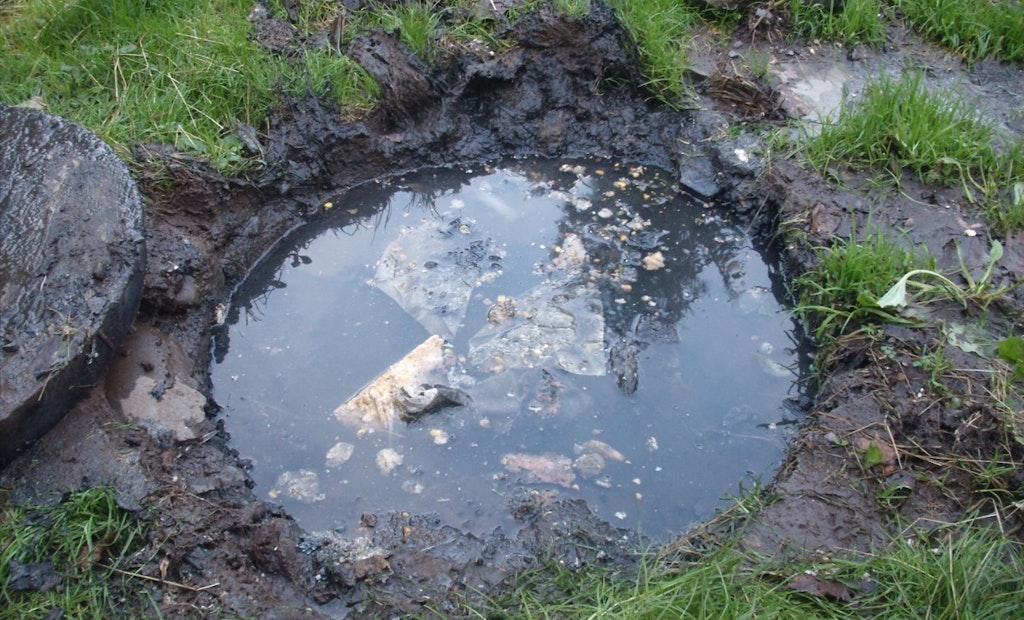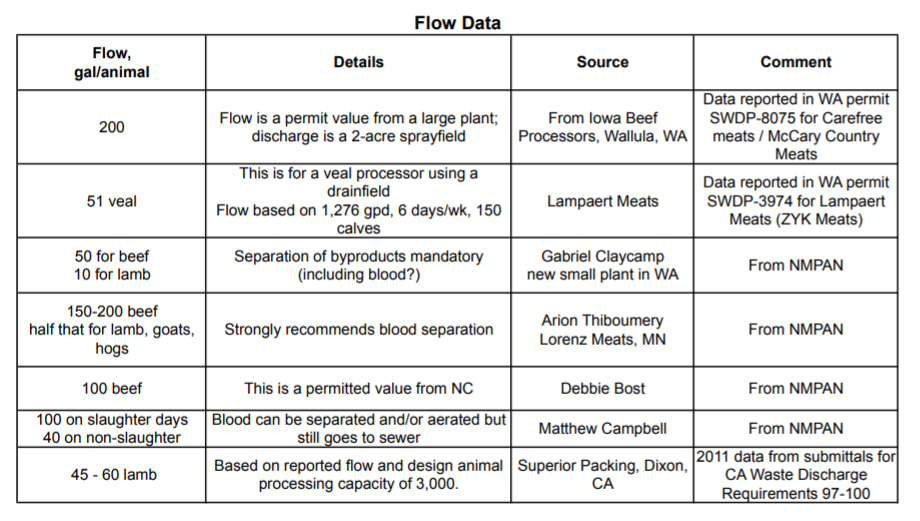Can I Place Animal Blood Into My Septic Tank?

Interested in Septic Tanks?
Become Septic Tanks articles, news and videos correct in your inbox! Sign up now.
Septic Tanks + Go Alerts
Slaughterhouse wastewater is non covered nether about country septic regulations, equally septic organisation sizing is based on research of typical flows and wastewater characteristics from domestic residences.
For small slaughtering facilities a decentralized onsite pick for treating its wastewater may be the most cost-effective — particularly if connection to a wastewater treatment plant is not feasible.
A septic organisation receiving slaughterhouse waste is considered by the Environmental Protection Agency to be a Grade V injection well organisation. Depending on the requirements of your state, county and/or local government, wastewater tin can be treated in various means. Go on in mind that at that place is no one "best" wastewater handling system. Dissimilar processors have different needs. Finding the right wastewater treatment system for the facility will depend on a number of variables.
ane. First y'all will need to determine what type of activities will occur at the facility:
- Slaughtering
- Cutting and wrap
- Value-added processing
- Sales room
- Worker showers and/or laundry.
Each of these activities will add boosted loading to the system.
ii. Which species are being candy: hogs, sheep, goats, poultry, wild game, etc.
3. Estimate or measure the volume of wastewater output each day and wastewater characteristics. Measure or gauge the pH, total suspended solids, biological oxygen demand and FOG levels. For existing facilities, menses measurements should always exist obtained. The tables below evidence flow estimates and wastewater characteristics that were gathered by Niche Meat Processor Assistance . It should also exist determined if processing volition exist consistent or seasonal in nature.


Choice one: In general, if information technology is possible to connect to a municipal wastewater treatment institute, this is oft a expert pick. If the facility is located within reach of these services, information technology will probable be worth paying the initial connection fees and monthly sewer costs rather than building and managing a pocket-size onsite wastewater treatment system. Before this decision is fabricated, the facility should contact the local public works or municipal wastewater treatment facility to detect out about connexion fees and estimated monthly charges. With smaller towns or undersized wastewater treatment plants, the boosted loading from a larger abattoir may exist a challenge.
Choice 2: For smaller facilities installing a holding tank that is pumped may be an option. The holding tank waste product could be land-applied or taken to a wastewater handling plant. This is as well a good option for phased growth where the system can starting time as a belongings tank and once the business is more established an onsite wastewater treatment system can be installed. The property tank should take an alarm to indicate when information technology is 75 percentage total.
Selection 3: A typical/conventional septic system with just a septic tank and drainfield will non piece of work for meat processing plants because of the high levels of BOD, TSS and FOG in the wastewater. If it is a larger facility, building an anaerobic digester, pond or lagoon organization may be a good option, merely for smaller facilities, a septic arrangement with advanced handling could exist a good solution. The nearly likely blueprint solution would be installation of an aerobic treatment unit of measurement later settling and oil and grease removal in septic tanks. With high-strength wastewater, catamenia equalization with time dosing should be considered, and menstruation monitoring is essential for proper management. Other recommendations include:
- It is best to separate the beast processing wastewater from man domestic wastewater for bathrooms, showers and laundry. The domestic wastewater will need to meet all the local/state septic regulations where the remaining wastewater will likely be governed by an industrial- or agricultural-related program.
- Apply of cleaning chemicals should be kept to a minimum. Septic systems can deal with small amounts of cleaning chemicals, but if the amount is above typical domestic usage, system functioning may be impacted.
- If animals are killed in the facility, all blood should be caught separately and either used, rendered or taken to a treatment facility.
- All solid material should be dealt with as a solid waste. Fine grates should be put on all flooring and sink drains to catch any pocket-sized particles and hair.
- A commercial-size effluent filter (designed for high-strength waste) should exist placed on the outlet of the last septic tank. A manhole should exist located over this filter, equally there will be a need for frequent maintenance and cleaning.
- A maintenance contract should be in place with a licensed onsite professional to assure the proper operation and maintenance of the treatment system.
Afterwards handling, the remaining detail for consideration is where the dispersal will occur. Depending on the quality of the effluent, size and climate, irrigation may be an option; in some areas, a subsurface drainfield may be a meliorate pick.
Most the author: Sara Heger, Ph.D., is an engineer, researcher and instructor in the Onsite Sewage Treatment Plan in the Water Resource Heart at the Academy of Minnesota. She presents at many local and national training events regarding the design, installation, and management of septic systems and related enquiry. Heger is education chair of the Minnesota Onsite Wastewater Association and the National Onsite Wastewater Recycling Clan, and she serves on the NSF International Committee on Wastewater Treatment Systems. Ask Heger questions about septic organisation maintenance and operation by sending an e-mail to kim.peterson@colepublishing.com.
Source: https://www.onsiteinstaller.com/online_exclusives/2019/01/recommendations-for-a-slaughterhouse-septic-system
Posted by: tarverwhers1980.blogspot.com

0 Response to "Can I Place Animal Blood Into My Septic Tank?"
Post a Comment